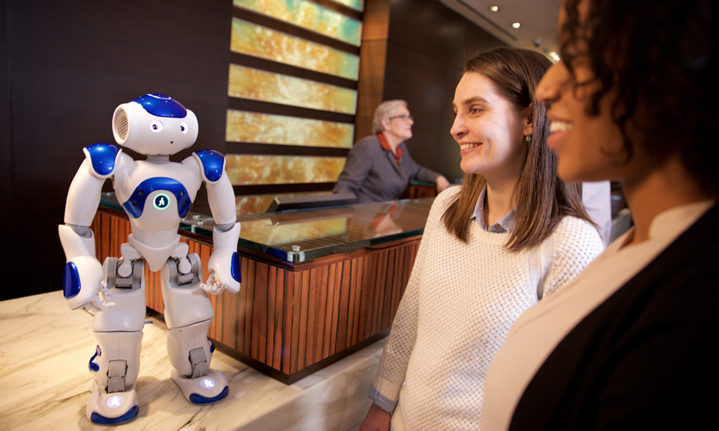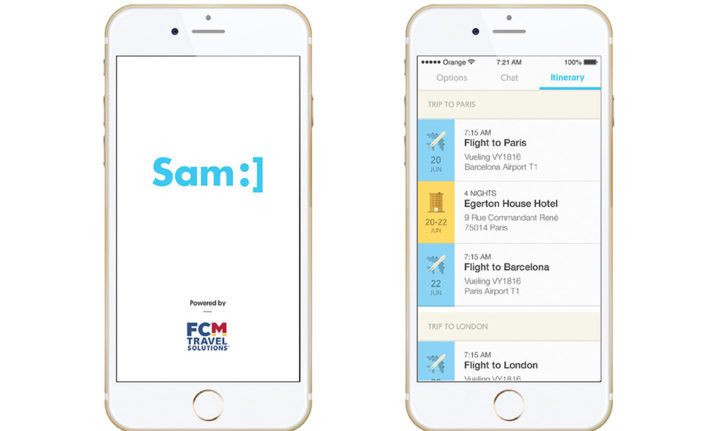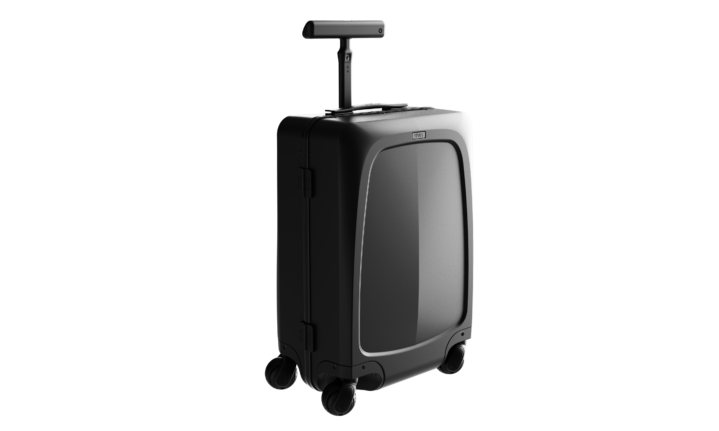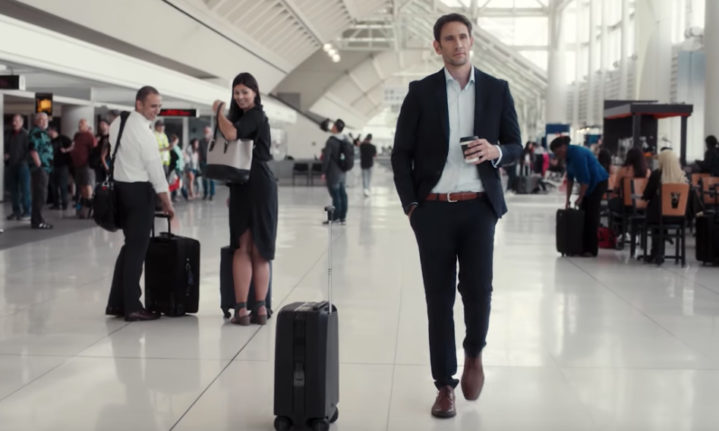A suitcase that follows you through the airport like a puppy sounds like a convenient way to move your luggage from place to place. A Chinese technology company specialising in merging robotics and artificial intelligence (AI) cleary thought so too and has produced the vision-powered Ovis Suitcase, an autonomous suitcase that accompanies travellers on the go, leaving commuters hands-free while it follows along right at their side.
ForwardX Robotics was founded by CEO Nicolas Chee and has grown with his team of top engineers and scientists in its quest for innovation in the fields of robotic vision and self-driving technology with AI autonomous robots.
According to a ForwardX, the Ovis is designed to enable a new class of business flyers to travel completely hassle-free.
In a press release, the company explains that its robots use deep learning-based computer vision for high level understanding, visual simultaneous localisation and mapping (VSLAM) positioning, reinforcement learning-based navigation and avoidance, and automatic control technology, allowing robots to have an ‘AI brain’ with perception, cognition, judgment and decision-making capabilities.
The Ovis Suitcase is an update on ForwardX’s prototype model showcased at last year’s convention, the CX-1. Unlike its successor, last year’s proto-model could only follow its user from behind, whereas the Ovis is able to ‘side-follow’ for what the company is calling a ‘more intuitive user experience’.
The suitcase uses self-driving technology and complex algorithms to faithfully follow at its owner’s side – through airports, hotels and down city streets. The suitcase can apparently handle slopes of up to six degrees and should be able to handle various surfaces, from concrete and marble to carpets, the company claims. The Ovis uses computer vision technology to identify obstacles and can quickly finds its way around them, providing travellers with a hands-free experience.
Ovis—you’re making this traveling bug’s dreams come true. A suitcase that follows you like a puppy! 🐶@ForwardXRobo pic.twitter.com/aFw8cG8MxK
— WE Communications (@WEcomms) January 10, 2019
When a user encounters stairs or an escalator, they need only place their hand on the suitcase’s handle to engage its manual mode. The bag has a built-in lock which is TSA-approved. The suitcase works in tandem with a smart wristband that enables the suitcase to follow travellers wherever they go. ForwardX has also developed an app that can manage and keep track of where your suitcase is at all times.
The Ovis Suitcase, which is production-ready, should be available to retailers before mid-year and available from Amazon.com in the second quarter of the year, but this smart-tech suitcase is going to cost you more than even your swanky Samsonite or Cellini carry-on. In the States the little hardshell carry-on case will retail for $799, which works out to roughly R11,000 – ouch.
Let’s see what over ten grand can give you, though – here are some specs on the Ovis Suitcase:
- Weighs 4.5 kg when empty
- Standing height is 50 cm
- Reaches a maximum speed of about 9.5 km/h
- Following distance/range just under 2 m
- Removable, airline compliant lithium-polonium battery
- Battery charges in 3 hours, lasts for nearly 19 km of travel, or about two round trips
- Waterproof (IPX5 rating)
- Equipped with two USB docs for charging on the go
- GPS-tagged (connected to app and smart wristband for monitoring)
‘Most robots today are programmed to do a single task,’ said Chee. ‘Our AI-enabled robots can perform several different functions with very limited help from humans, similar to self-driving vehicles. We see that as the next true breakthrough in robotic technology.’
The suitcase itself is already nearly three times as heavy as its ordinary, handheld counterparts, and it still remains to be seen whether and how this sleek-looking design will translate to bigger, long-haul luggage. While innovation certainly does excite, critics might wonder whether society really needs autonomous luggage when we can carry it ourselves. Individuals who have different ranges of mobility and ability would likely welcome this new development, and if this technology can open up travel opportunities and has the potential to ease the travel burden for disabled or older folks, albeit at a cost, then ForwardX and other tech innovators should develop this further.
Featured image: Screenshot/ForwardX Robotics



















